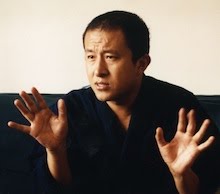- Dukkha
- Samudaya, the arising or origin of dukkha
- Nirodha, the cessation of dukkha
- Magga, the way leading to the cessation of dukkha
Last week's teaching on the 1st Noble Truth can be downloaded here (part 1 - 43 min), here (part 2 - 8 min), here (part 3 - 8 min) and here (part 4 - 47 min): apologies for technical problems that resulted in the fragmented recording and poor quality. This week's teaching on the 2nd Noble Truth can be downloaded here (90 min).
Most Buddhists have heard that the Four Noble Truths are the foundation of the Buddhist path, but as we studied these chapters, we realised that there is a lot more to these short statements than we thought. It's a good antidote to any potential Vajrayana arrogance where we might think that because we are followers of a supposedly higher path, we can look down on the seemingly simpler and less sophisticated Theravada approach. As Chögyam Trungpa Rinpoche taught, spiritual materialism is an ever-present danger on the path, and without a clearer understanding of the nature of dukkha, Vajrayana practice might simply become a sophisticated form of entertainment or distraction, or just another ornament or hiding place for ego.
Many important insights emerged from our discussions, which I will add in separate posts. In particular, Rinpoche has always taught that Buddhist practice is defined by view rather than action (as taught extensively in the Madhyamika teachings, and also in his book "What Makes You Not a Buddhist"). In the Mahayana, the view can be explained in terms of the Four Seals, which Rinpoche expresses as:
- All compounded phenomena are impermanent
- All emotions are pain
- No phenomena have a truly existing self or nature
- Nirvana is beyond extremes
In the Pali Canon, there are three seals (the fourth is not included), all of which follow from the definition of dukkha in the First Noble Truth (see p.57 of Rahula):
- All conditioned things are impermanent (Sabbe samkhara annica)
- All conditioned things are dukkha (Sabbe samkhara dukkha)
- All dhammas are without self (Sabbe dhamma anatta)
So if nothing else, a deeper understanding of the First Noble Truth allows us to appreciate the meaning of the Four Seals, and thus the essence of the Buddhist path. It provides a solid foundation for our practice and a deeper appreciation of the Theravada as the "root yana" upon which the Mahayana and Vajrayana are built.
.jpg)
.jpg)
No comments:
Post a Comment